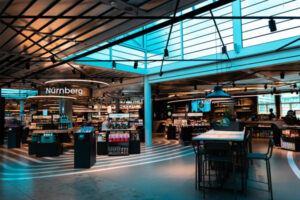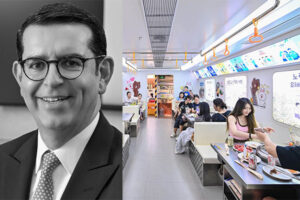By Kristjan Kask
Traditionally, it marks activities people actively participate in, like riding a carrousel or bumper car, clapping hands at a concert, or enjoying a blockbuster in an IMAX. More recently, the shopping center industry has begun to classify the food and beverage segment as entertainment as well, but active participation remains the main criterion.
Do we have the time and energy for such activeness each time we visit a mall? Does entertainment then only target kids and teenagers? Does entertainment have a wider meaning in new-generation malls?
In my opinion, entertainment should cover the whole process when a customer is inside a shopping center, from entry through exit from the parking garage, and should not be limited to purposeful participation. If the king—our customer—does not leave the mall feeling exhausted, bored, or worn out, then entertainment has indeed been delivered and we have fulfilled our task.
For the readers of ACROSS, visiting shopping centers is often part of the job and our perspective is therefore different, but customers are usually tired after an hour of walking around and swear never to return (this is especially true for male customers). Thankfully, they usually do… at least for now.
This problem for our customers cannot be solved by extending the children’s playground, adding a cinema, or a dozen more restaurants. It should be solved by focusing on the design and quality of the common areas—the urban environment inside the shopping center. The mood in the common area—its emotional and functional feeling—is the entertainment that we really need to create and offer to our clients.
The time customers spend in common areas is often longer than the time spent in shops, but most of today’s malls seem to have galleries for the sole purpose of allowing people to move from one shop to another—though you can of course also clog them with kiosks to improve net operational income.
An attractive and well-balanced offer of shops; a wide range of restaurants, coffee corners, and street food; large and inviting children’s areas; a cinema; and sports bars are the necessities of a modern shopping center. The client’s ultimate entertainment lies in meticulous urban and service design, however.
This includes a signage system that makes one feel cared for, acoustic solutions to remove the disturbing background noise often present in crowded premises, well-identified areas and landmarks to help navigate within the shopping center, leisure zones and ergonomic urban furniture designed for work, fun, privacy or relaxation, convenient parking guidance to help locate the car, and much more.
In developing T1 Mall of Tallinn, to be opened in October 2018, we have engaged a strong service and urban design team to give entertainment real meaning. Our clients’ entertainment will start from the moment they enter the shopping center and remain in their memories until the next visit.






